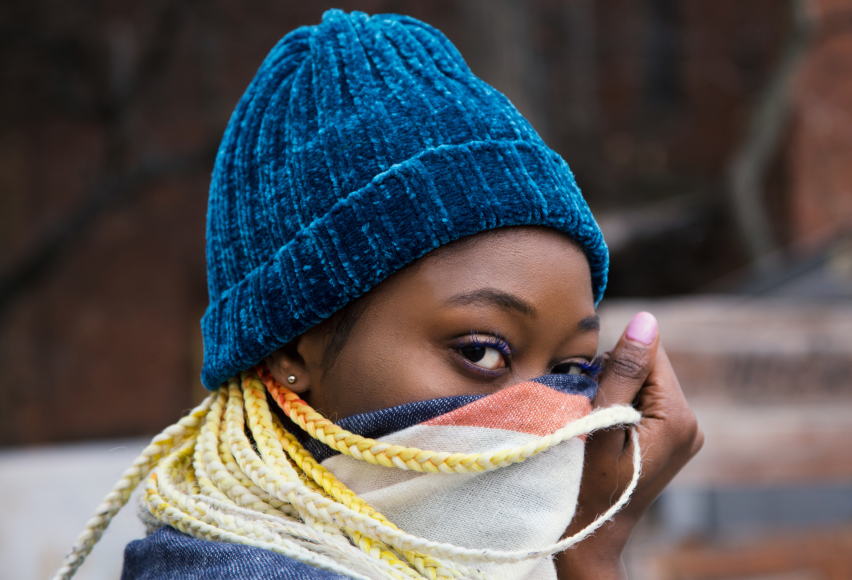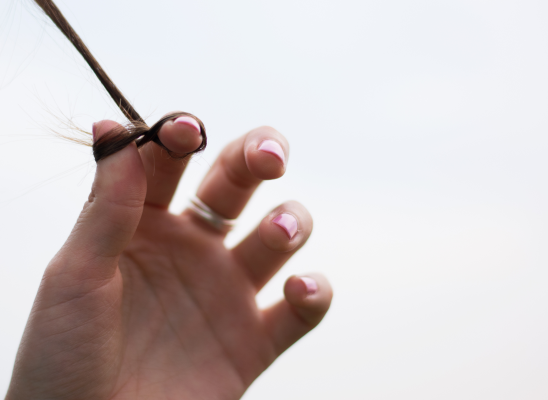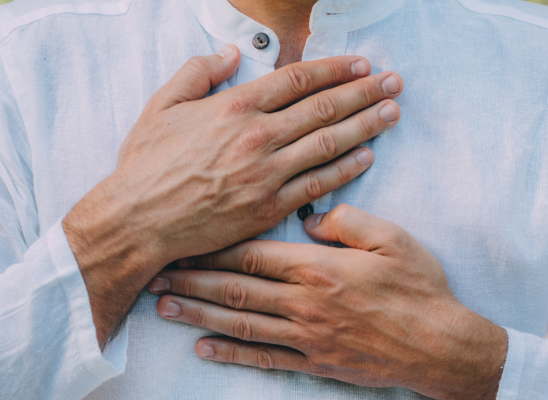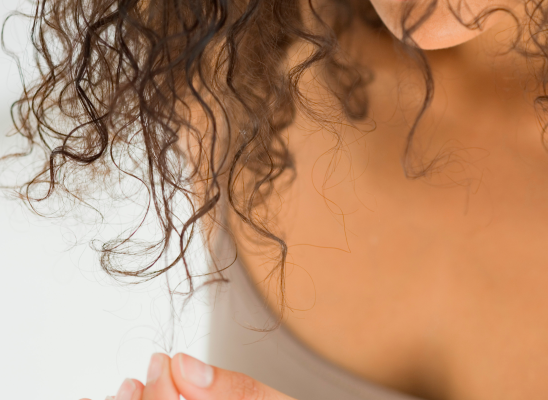Trich and the Winter Blues: Understanding the Connection and Coping Strategies

Online test
Find out the severity of your symptoms with this free online test
As summer gives way to fall, the days grow shorter and colder weather sets in, many people experience changes in mood and behavior, sometimes called the “winter blues”. For some people, it’s more than feeling a little blue, and the depression can be significant. If you live with trichotillomania (commonly known as trich), you may have noticed an increase in hair pulling symptoms that seem to come with the change in seasons.
Seasonal Affective Disorder (SAD) is a type of depression that usually occurs during the darker, colder months, and can exacerbate other mental health issues. For people living with trich, SAD can add a layer of complexity to an already challenging condition. Understanding how seasonal changes influence hair pulling helps you understand more about what’s happening and find ways to manage your symptoms during the colder months.
Understanding Seasonal Affective Disorder (SAD)
Seasonal Affective Disorder (SAD) is a type of depression that occurs with the change of seasons, most often with the transition to fall and winter. SAD is thought to be caused by the seasonal reduction in sunlight, in turn disrupting the body’s circadian rhythms and serotonin levels, which impact mood regulation, sleep, and stress resilience.
Symptoms of SAD may include:
- Depression, feelings of sadness on most days
- Anxiety
- Changes in appetite, usually eating more, craving carbohydrates
- Low energy
- Feelings of hopelessness or worthlessness
- Difficulty concentrating
- Increased irritability or agitation
- Anhedonia (loss of interest in activities you usually find pleasant)
- Social withdrawal
- Sleep disturbance (usually oversleeping)
- In severe cases, thoughts of death or suicide
Though SAD can affect anyone, people with co-occurring mental health conditions like anxiety disorders, obsessive-compulsive disorder (OCD), or mood disorders may be more vulnerable to SAD's influence.
The Connection Between SAD and Trich
The relationship between SAD and trich is complex, and not well-understood. However, several factors may make people living with trich more susceptible to worsening symptoms during the colder months.
Reduced Light Exposure and Serotonin Levels
Sunlight is known to boost serotonin, a neurotransmitter that plays a role in mood regulation and impulse control. Less sunlight in winter leads to lower serotonin levels, which can cause changes in mood. Depression frequently co-occurs with trich and can worsen hair pulling. Low serotonin can also make individuals more prone to anxiety and stress, both of which are common triggers for hair-pulling.
Increased Fatigue and Lack of Motivation
SAD is often accompanied by fatigue and low motivation, leading to a disruption in healthy routines. It may be harder to connect with your supportive friends and family or engage in those healthy habits that help you manage your stressors and urges to pull. The lack of social engagement removes a layer of accountability or motivation to avoid pulling, potentially reinforcing the behavior.
Changes in routine can also leave you with more idle time, leading to feelings of boredom or restlessness. People with trich often cite feeling bored or restless as triggers to pulling.
Stress and Anxiety from the Holiday Season
Anxiety is a common trigger for hair pulling and the change of season also ushers in one of the most stressful times of the year – the holidays. Between parties, family gatherings and the concerns about hair loss, holiday stress is high and can exacerbate anxiety leading to more pulling in an attempt to cope.
The good news is, there are things you can do to navigate this seasonal challenge. With some planning and support, you can handle whatever the season brings.
Strategies for Managing SAD and Trichotillomania Together
Coping with both SAD and trichotillomania can feel overwhelming, but there are strategies to help manage these conditions more effectively. Here are some evidence-based approaches:
Light Therapy
Light therapy, using a lightbox that mimics natural sunlight, is one of the most effective treatments for SAD. Using a lightbox for a few minutes each morning can help regulate circadian rhythms, boost serotonin levels, and elevate mood. . It can help boost your mood, regulate your sleep-wake cycle, and reduce the lethargy associated with SAD. There is some research suggesting that light therapy may also be helpful in managing trich.
Of course, you want to discuss any changes in mood or therapies with your healthcare provider.
Establishing a Daily Routine
Having a set schedule can be particularly helpful during the winter months. Seasonal changes can throw your daily rhythm off. By creating a routine, you can help keep your body in a routine that supports healthy habits.
- Set consistent sleep and wake times to regulate your circadian rhythm.
- Schedule time for self-care practices, such as journaling, mindfulness, or activities that you enjoy.
Prioritize Your Mental Health
Therapy, whether in-person or virtual, can provide you with the tools to manage both trich and SAD symptoms effectively.
- Both Cognitive Behavioral Therapy (CBT) and Habit Reversal Training (HRT) are commonly used to treat hair pulling. CBT is also commonly used to help treat SAD. CBT can help to manage negative thought patterns, while HRT focuses specifically on addressing the urge to pull. Working with a therapist can help you create a personalized strategy to cope with both SAD and the hair pulling.
- Mindfulness and relaxation techniques like deep breathing, meditation or progressive muscle relaxation (PMR) can reduce anxiety and stress, which are common triggers for hair-pulling behavior.
- Medication, such as selective serotonin reuptake inhibitors (SSRIs), may be prescribed to manage the depressive symptoms of SAD and may help you better manage the urge to pull.
Stay Connected with Your Support System
Feelings of isolation can exacerbate feelings of depression and increase urges to pull. Finding support, whether through friends, family, or support groups, can make a difference. Online communities and local support groups for people with trichotillomania can provide encouragement, reduce loneliness, and offer helpful tips for managing symptoms in the winter months.
Putting It Together
SAD can sometimes exacerbate symptoms of trich, leading to a cycle of low mood and increased hair pulling. You can navigate the winter months successfully. With a proactive approach and compassionate self-care, you can reduce the impact of seasonal changes on your hair pulling and maintain your mental well-being no matter the season.
References
1. American Psychiatric Association. (2024, March). Seasonal Affective Disorder (SAD). https://www.psychiatry.org/patients-families/seasonal-affective-disorder
2. Sinha, P., Bakhla, A. K., Patnaik, A. K., & Chaudhury, S. (2014). Seasonal obsessive-compulsive disorder. Industrial psychiatry journal, 23(2), 160–162. https://pmc.ncbi.nlm.nih.gov/articles/PMC4361980/
3. Feldman-Naim, S., & Rosenthal, N. E. (2021, February 4). A case of seasonal trichotillomania. Psychiatrist.com. https://www.psychiatrist.com/jcp/case-seasonal-trichotillomania/
4. Bottesi, G., Cerea, S., Ouimet, A. J., Sica, C., & Ghisi, M. (2016). Affective correlates of trichotillomania across the pulling cycle: Findings from an Italian sample of self-identified hair pullers. Psychiatry Research, 246, 606-611. https://www.sciencedirect.com/science/article/abs/pii/S0165178116305819
5. Campbell, P. D., Miller, A. M., & Woesner, M. E. (2017). Bright Light Therapy: Seasonal Affective Disorder and Beyond. The Einstein journal of biology and medicine : EJBM, 32, E13–E25. https://pmc.ncbi.nlm.nih.gov/articles/PMC6746555/
6. Investigating the effectiveness of treatments used in trichotillomania. (2016). Journal of the American Academy of Dermatology, 74(5), AB136. https://doi.org/10.1016/j.jaad.2016.02.536
7. Novotney, A. (2019, May). The risks of social isolation. https://www.apa.org. https://www.apa.org/monitor/2019/05/ce-corner-isolation
Online test
Find out the severity of your symptoms with this free online test
Start your journey with TrichStop
Take control of your life and find freedom from hair pulling through professional therapy and evidence-based behavioral techniques.
Start Now



